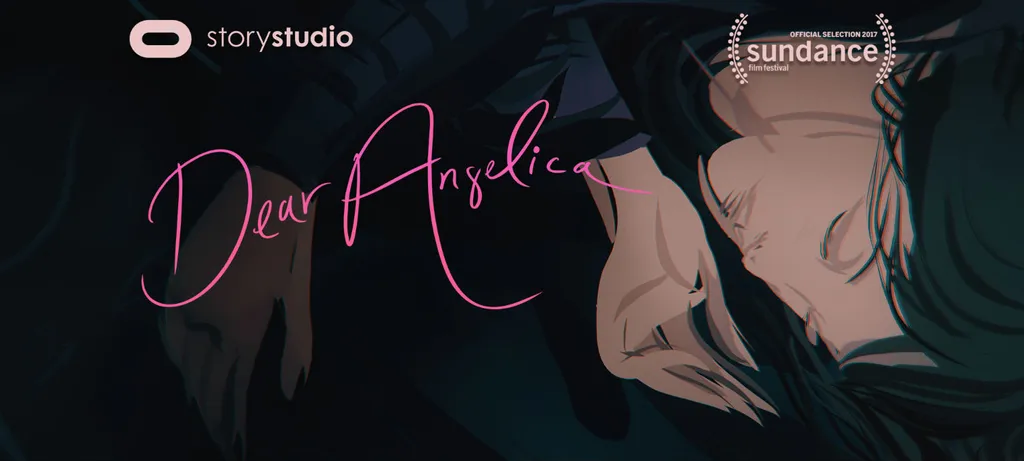“Finding the language of VR is our role,” writer/director Saschka Unseld tells me as I sit with pen in one hand and tissue in the other, decompressing from my time inside Oculus Story Studio’s (OSS) Dear Angelica. “Nailed it! And how many tears does it take to void the warranty on a Rift?,” I quip.
Dear Angelica is OSS’s third visual story, but it’s by far the deepest, most poignant, and best use of the VR platform from the studio to date. It’s a very personal narrative — but also one that focuses on universal themes — highlighting the emotional bond between child (Jessica, voiced by Arrested Development’s Mae Whitman) and mother (Angelica, voiced by Geena Davis).
I won’t get into the details of the story so as to not spoil anything, but I will say it was so intimate that I couldn’t help but think there was something specific in Saschka’s own life that compelled him to explore these themes. “I thought about how the stories I told came from the things my parents taught me,” Saschka pauses before finishing his thought… “It gives what stories you tell greater importance.”
The experience starts in Jessica’s bedroom, with the teenager nestled in her bed writing to her mother. Loopy script appears in the vast space overhead. I’m peering over Jessica’s shoulder as she writers, and I feel like a ghostly interloper invading her private sanctuary as she shares her most cherished thoughts and feelings.
The narrative unfolds as vibrant illustrations by artist Wesley Allsbrook envelop me, teasing my eyes to dance around the scene. The ribbon-like strokes promote a sense of movement and chaos reminiscent of van Gogh and Hokusai. It makes me feel as if I’m walking through a series of frantic, fluid paintings as they’re being created, and I’m enthralled as I take it all in. Some scenes are harried and frenetic, others sedate and calmly introspective; the varied drawing pace complements the voice-over to create a synchronized emotional timbre.
[gfycat data_id=”InexperiencedCircularBoto”]
OSS also plays with scale to convey emotional impact. I was in the middle of a florid, tornado-sized maelstrom of strokes in one scene, and the next I was hovering over a miniature, muted, diorama-like room, which greatly enhanced the sense of detachment and separation.
When I finally emerged from Dear Angelica 12 minutes later, I was emotionally drained, and admittedly a little misty-eyed as I removed my visor. You’ll obviously want to experience the story in full the first time through, but it’s also possible to pause mid-stroke and explore each illustration in more depth. Ever inquisitive, I crawled down to my hands and knees in order to look under Jessica’s bed, and to my delight I discovered she had a nest of dirty clothes, books, and other detritus shoved beneath, just as you would expect from any true teenager. I even made a little personal game out of trying to find the little miniature Jessicas tucked away in the more fantastic scenes.
Dear Angelica shows VR’s potential as a powerful platform for storytellers, which serves as a much more immersive medium than the flat screen. As Unseld describes it, “The greatest thing about being at Sundance is to reach people outside of the VR world and show them what VR can do.”
Dear Angelica is available now in the Oculus Rift store, so you can check out the emotionally charged experience for yourself… just be sure to have a box of tissues nearby.
Once you’ve had a chance to experience Dear Angelica yourself, tell us what you thought in the comments!






























